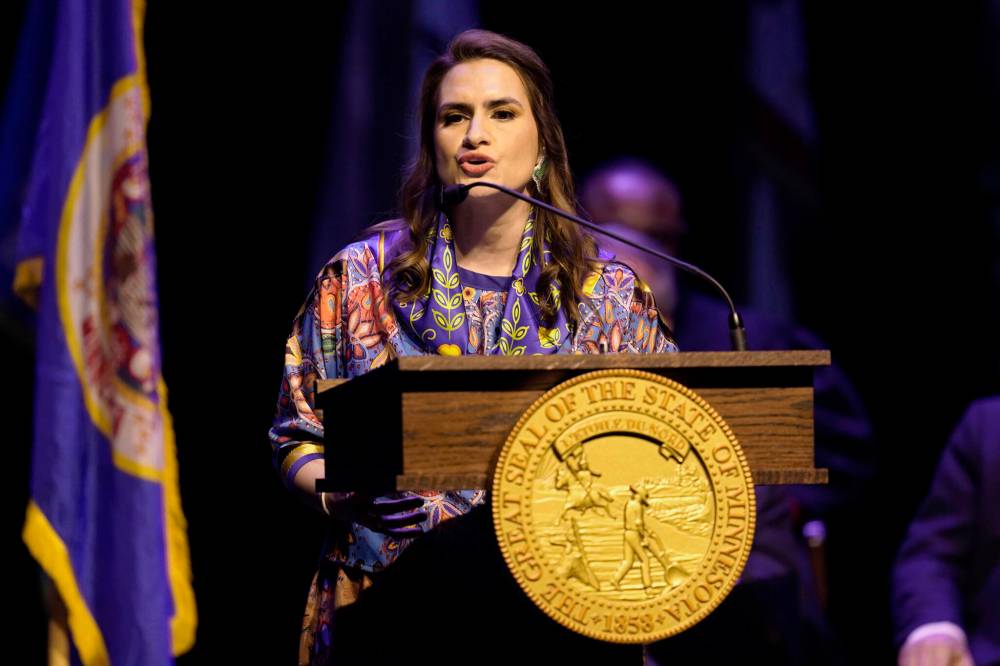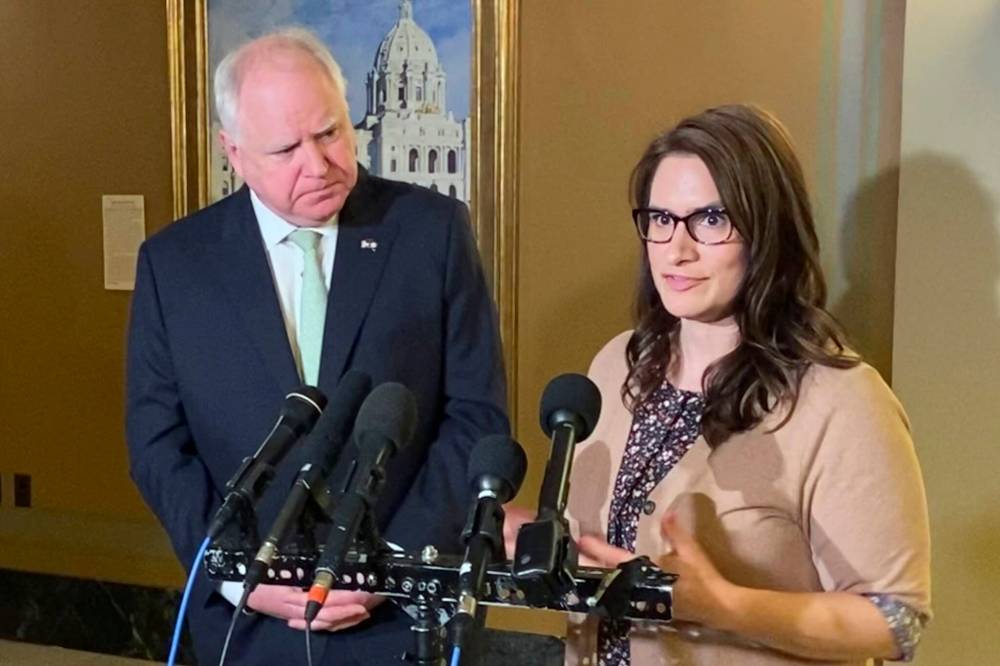The U.S. presidential election is still more than two months down the road, but it could lead to history-making moments in a multitude of ways.
First, of course, Kamala Harris — who will accept the Democratic party’s nomination next week, replacing President Joe Biden at the top of the ticket — will become America’s first woman in the Oval Office by defeating Donald Trump in an earth-shaking, glass ceiling-smashing result.
That would be the first domino to fall in a chain of events that would be equally groundbreaking for Indigenous communities on both sides of the border.

Harris chose Minnesota Gov. Tim Walz as her vice-presidential running mate last week. Their victory at the ballot box on Nov. 5 would make state history, elevating Walz’s second-in-command — Lt.-Gov. Peggy Flanagan, a member of the White Earth Band of the Minnesota Chippewa Tribe Nation — to the position of governor.
She would become the first-ever Indigenous woman to serve as a U.S. governor, and just the third Native American to occupy the office in any state.
It would also create an unprecedented cross-border relationship in which a Canadian province and neighbouring American state were both Indigenous-led.
Minnesota relies on Manitoba’s agricultural sector and hydroelectricity. The two governments share other common interests, including border security.
The notion that two Indigenous leaders might soon be having those conversations opens up exciting new possibilities. Topics such as pipelines, land rights, culture and language immediately come to mind.
Both Premier Wab Kinew and Flanagan are Anishinaabe — my people. We’re sort of known to be communicators and mediators.
Flanagan is a two-term lieutenant-governor who got her start advocating for Indigenous families in Minneapolis after earning degrees in Native American studies and child psychology at the University of Minnesota.
Her activism began long before she went to university. Her father is Marvin Manypenny, a well-known land-rights advocate who fought for the return of territory to the White Earth Band in the 1980s.
Manypenny is known as a bit of a rabble-rouser who criticized his own tribal government and its “goon squad” community policing system.
He’s also known as an Indigenous legal expert, particularly as a result of his involvement in drafting the White Earth constitution — which was negotiated for years before finally being ratified in 2009.
Flanagan, whose mother is Irish — a people who have also struggled against colonization — seems to have built a career bridging resistance and institutional change.
Unsurprisingly, that work began in education.
In her early activist days, she argued for educational access for urban Indigenous families, ran an organization that advocated for and defended children and she helped church leaders work more effectively with Indigenous communities.
She also led efforts to eliminate racist sports mascots and advocated for Indigenous access to voting stations.
After serving on the Minneapolis Public Schools Board and in the Minnesota House of Representatives for nearly a decade, Walz chose her to be his running mate in 2017.

Together, the two of them have put support for Native American families and, in particular, women and children, high on their agenda.
Almost immediately, Flanagan launched Minnesota’s first People of Color and Indigenous Caucus, led an international delegation helping to introduce Indigenous businesses to the global market and changed the state’s flag, which depicted a farmer tilling the land as a Native American fled.
“It’s literally a Native person being driven off their land… It’s horrific,” she said.
In 2019, Walz and Flanagan launched a task force into the issue of murdered and missing Indigenous women in the state. In 2021, it became a permanent office, expanding its mission to include murdered and missing Indigenous men, boys and two-spirit peoples.
They got legislation passed designed to provide adequate supports for transgender youth, designed and delivered a statewide breakfast and lunch program all students regardless of their family’s income and set new rules to support child care for working families.
In case it’s not obvious by this point, many of Flanagan’s accomplishments bear some resemblance to those of Manitoba’s NDP government.
Flanagan has also started to attain the kind of celebrity status in Minnesota that Kinew now enjoys on TV and social media here, as evidenced by a quick internet search.
When U.K.-based newspaper the Guardian does a feature story on you, you’re more than just a politician.
The Indigenous community has embraced her, too. In 2020, the National Congress of American Indians presented her with a Native American Leadership Award, and Bemidji State University named her a Distinguished Minnesotan.
All of this sets the table for a once-unthinkable reality that in the heartland of North America — where the U.S. cavalry wiped out Indigenous communities and Canadian lawmakers devastated First Nations families and their culture — descendants of survivors will lead those very same governments.
That, my relatives, is the definition of irony.
niigaan.sinclair@freepress.mb.ca

Niigaan Sinclair
Columnist
Niigaan Sinclair is Anishinaabe and is a columnist at the Winnipeg Free Press.
Our newsroom depends on a growing audience of readers to power our journalism. If you are not a paid reader, please consider becoming a subscriber.
Our newsroom depends on its audience of readers to power our journalism. Thank you for your support.